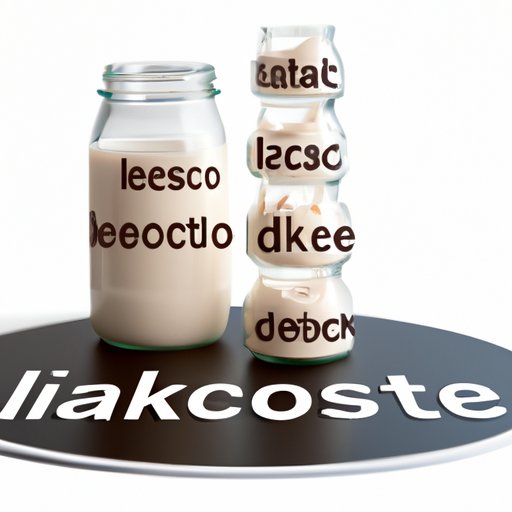
How Do They Make Lactose Free Milk: An Inside Look at Processing Techniques
Lactose intolerance affects around 65% of the global population. So, for people who cannot handle lactose in their diets, dairy milk is not an option. However, lactose-free milk is a potential solution for them. But how is it made? What’s the science behind it? Let’s explore the process of creating lactose-free milk.
The Science Behind Lactose Free Milk: An Introduction to Processing Techniques
Lactose-free milk is not much different from regular dairy milk, except for one key difference – lactose content. Lactose is a naturally occurring sugar found in milk that can cause digestive issues for some people. To create lactose-free milk, lactose needs to be removed or broken down. There are various processing techniques that can do this.
From Farm to Fridge: The Journey of Lactose-Free Milk
Milk production begins on dairy farms, where cows are milked and the milk is collected in bulk storage tanks. When producing lactose-free milk, the cows are often milked separately. There are specific considerations taken during lactose-free milk production. Once the milk reaches the processing plant, it goes through a series of steps to remove lactose and pasteurize. Finally, the milk is packaged and sent to grocery stores.
Lactase Enzyme and Ultrafiltration: The Two Key Processes Behind Producing Lactose-Free Milk
Lactase enzyme and ultrafiltration are the two primary processes used to remove lactose from milk. Lactase enzyme is derived from yeast or bacteria and can be added directly to milk to break down lactose. Ultrafiltration uses a filter with microscopic pores to separate the lactose from the milk. Both processes have pros and cons and can affect the taste, texture, and nutritional value of lactose-free milk.
Understanding the Importance of Lactose Free Milk for Those with Lactose Intolerance
Lactose intolerance is common, and it can cause digestive problems such as bloating, gas, and diarrhea when people consume dairy products. Lactose-free milk can be used as a replacement for people who are lactose intolerant. It has the same nutritional benefits as regular milk but without lactose. In addition, lactose-free milk can offer increased digestibility and a reduced risk of inflammation.
The Rise in Popularity of Lactose Free Milk: How Quality Control and Taste Are Key
Lactose-free milk has gained popularity in recent years, as more people become aware of lactose intolerance and seek alternative dairy products. Quality control plays a significant role in producing lactose-free milk. Flavors, aromas, and textures are important factors for customers when choosing lactose-free milk. Taste tests have shown that lactose-free milk is preferred over regular milk in some cases.
Comparing Lactose-Free Milk and Traditional Milk: Nutritional and Environmental Considerations
Lactose-free milk has the same nutritional profile as regular milk, including calcium, protein, vitamins, and minerals. The manufacturing process of lactose-free milk has some environmental benefits because it produces less whey, which is a waste product from traditional milk production.
Innovation in Dairy Production: Lactose Free Milk and Beyond
Lactose-free milk is just one example of innovative dairy production. Other innovations include plant-based milk alternatives, dairy-free cheese, and more. In the future, new technologies may develop even more sophisticated methods to produce lactose-free milk.
Conclusion
Lactose-free milk is an excellent option for those with lactose intolerance, without compromising on taste or nutritional value. Different processes are used to produce lactose-free milk, including lactase enzyme and ultrafiltration. Quality control and taste are essential for this product’s success. It is also important to understand the environmental benefits of lactose-free milk production and future possibilities for dairy product development.




